Arbinger Institute's Blog, page 6
January 3, 2024
Improving the disconnect between leaders and employees
When we received the results from Arbinger’s workplace survey for our 2024 trends report, one of the most standout findings was the significant difference between how executives perceived their organizations versus how their employees felt about them. It was immediately clear that there was a major disconnect in the workplace.
Just take a look at some of these results:
Executives feel 2.5x more strongly that their company is providing adequate opportunities to enhance skills and career developmentExecutives feel nearly 3x more satisfied with the steps their company has taken to address the well-being and mental health of employeesExecutives feel over 3x more satisfied with their company’s current level of communication and collaborationWith this information at hand, it becomes a lot clearer why overall job satisfaction hit an alarming low this past year, with just 22% of professionals giving their company a rating of excellence.
Employees have expressed challenges with collaboration, communication, efficiency, innovation, and more, and executives simply aren’t seeing it that way. And while to employees, it may seem like leadership is turning a blind eye to their concerns, what’s likely happening is that leadership has no idea about the problems that their teams are facing (or if they do, they don’t truly understand the impact of them).
Teammates feeling disconnected at work can have an extremely damaging effect on your organization’s culture and results. For this reason, it’s critical that leaders prioritize bridging this gap in 2024 and work to foster more trust between leaders and employees.
The disconnect between managers and employeesIn our research, we found that less than half (43%) of organizations offer conversations or communications with leaders regularly to employees. That’s a huge misstep when it’s been proven that those who have the opportunity to provide feedback for leadership feel more heard than others.
But that also helps us understand why when we asked executives and non-executives to rate their organization’s performance in the following areas, we got such different answers:
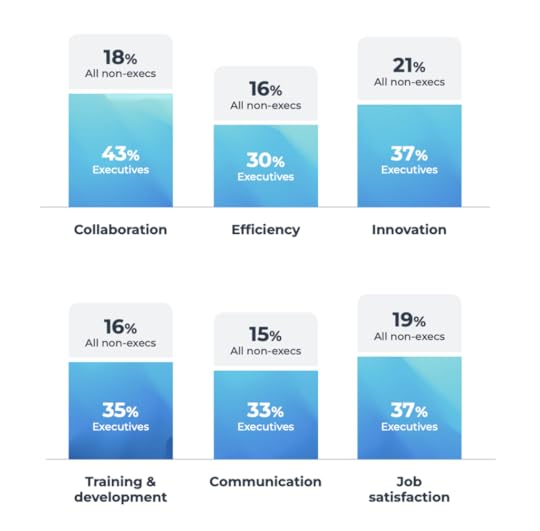
We’re calling this the disconnect effect. If executives, often with the best of intentions, are out of touch with how their employees and teams feel, then it will ultimately impact performance and company growth. Not to mention the culture, leading to lack of employee engagement and feelings of resentment that can truly impact productivity and innovation.
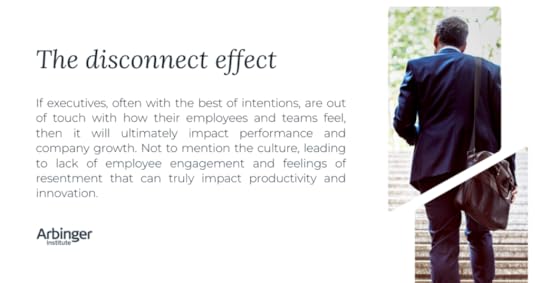
One of the most special feelings is being truly seen by someone. And as you can imagine, employees feeling like they aren’t seen or heard by their organization’s leadership team can have detrimental effects. We know that sometimes (especially when work gets busy), it’s easy to forget that our colleagues are human too, each with challenges and frustrations and goals of their own. That’s why it’s important to take the time to recognize the humanity in our peers.
Whether you’re in a leadership role or not, try doing these three things and see how your mindset shifts at work:
Get to know your colleagues as people. Book a 30-minute meeting and get curious, ask questions, and start to understand your teammates as more than just their job titles. You’d be surprised what you’ll learn and how differently you’ll see them!Regularly check in on how you impact those around you. Your team, your boss, your peers—how have you unknowingly made their jobs harder? What can you do to be more helpful? Focus on facts rather than interpretations. Making assumptions, rather than taking the time to communicate with those around us, is a surefire path to miscommunication. Watch how your perspective changes as a result of this exercise.Watch the short video below to see an example of a disconnect between manager and employee—and then, how easily that relationship was completely transformed.
We know your relationships at work may not feel exactly like Judie and Nelson’s. However, as our survey results revealed, we also don’t know what we don’t know. Seeing people as people is the first and most significant step to solving disconnect in the workplace.
Becoming a leader that others love to followNow that you have a better understanding of the leader/employee disconnect in the workplace, let’s talk about how to be a leader at work that others love to follow.
When we asked, our survey respondents indicated that they seek a leader with specific qualities, including trustworthiness, reliability, genuine listening, accountability, recognition of contributions, adaptability, and passion.
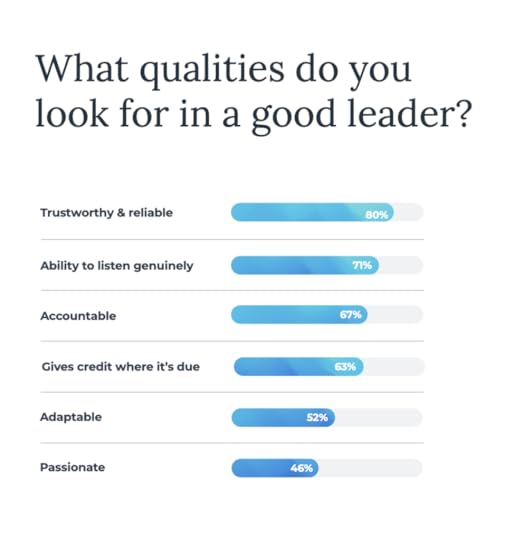
Find out what else leaders should prepare for in 2024. Get Arbinger’s Workplace Trends Report here.
Looking at the top responses above, we can see that employees are ultimately looking for a leader who treats them like they matter. At the end of the day, we’re all people who are no better than or less than our peers. By leading with empathy and understanding, we’re able to take another step towards bridging the disconnect in the workplace, ultimately improving relationships and boosting employee engagement on the job.
Some ways to take a more empathetic approach to leadership include:
Showing appreciation for employees’ contributions Owning up when you make a mistakeProviding ongoing feedbackBeing a good listener Recognizing when employees are overloadedHelping employees see their impact Asking how you can be more helpfulShowing genuine interest in employees’ wellbeing Demonstrating self-awarenessInvesting in future leadersOne of the other key themes that emerged in our survey data is a leader’s role in creating a work environment that’s psychologically safe. Unfortunately, 41% of those surveyed have felt afraid of retribution or negative consequences for speaking up at work. Even in work environments that aren’t inherently “toxic”, it can be difficult for employees to speak up if they feel like they don’t have the space or tools to do so.
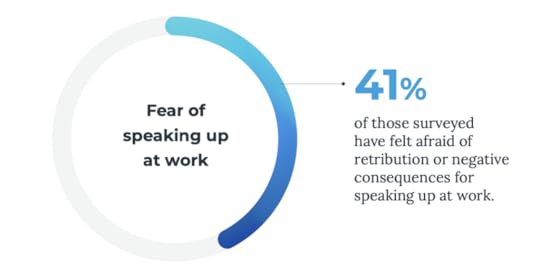
A hallmark sign of a great leader is being able to foster safe, honest, and self-reflective dialogues at work. In turn, employees are more likely to innovate, voice their opinions, and collaborate freely, which contribute to more overall organizational success.
Bridging the gap for a better workplaceSolving the disconnect in the workplace isn’t something that’s going to happen overnight, but by implementing some of the suggestions in this blog, you will start to notice night and day changes in your relationships with your employees and teammates.
 hbspt.cta.load(23346030, 'bdeb1367-d9ea-4975-abcd-0eec52f20413', {"useNewLoader":"true","region":"na1"});
hbspt.cta.load(23346030, 'bdeb1367-d9ea-4975-abcd-0eec52f20413', {"useNewLoader":"true","region":"na1"}); The post Improving the disconnect between leaders and employees appeared first on Arbinger.
5 workplace trends to prepare for in 2024
If the past few years have taught us anything, it’s that it certainly doesn’t hurt to be a step or two (or five) ahead of the curve. To help in strategic planning efforts and support you in getting to the heart of what will matter most to workplaces in 2024, we conducted a global survey of 300+ respondents to uncover this year’s five most influential workplace trends.
When digging into the survey data, some standout challenges emerged:
Job satisfaction is at an all-time lowExecutives are out of touch with their employeesWork-life balance is even more important than salaryAn increased focus on company cultureIn 2024, employers who want to succeed need to prioritize their company’s most important asset: its people. With a focus on bringing humanity to the workplace, employers can emphasize individual strengths, promote meaningful contributions, and ultimately improve employee satisfaction and retention. We explore this in Arbinger’s 2024 Trends Report which you can download here.
To give you a preview of what’s covered in the report, here are the top five workplace trends employers should be preparing for this year:
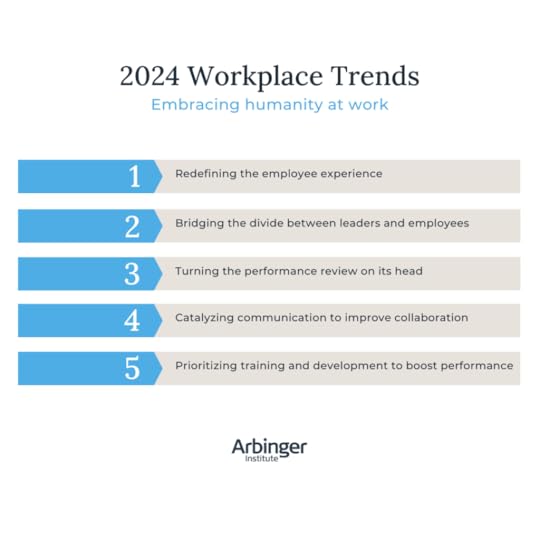 Trend #1: Redefining the employee experience
Trend #1: Redefining the employee experienceOnly 29% of those surveyed report being very satisfied with the steps that their company has taken to address the well-being and mental health of employees.
Employee wellbeing is an integral part of the employee experience. According to those surveyed, flexible working hours and overall mental health and stress management are among the top areas that professionals would like to see invested in by their company when it comes to wellness.
Trend #2: Bridging the divide between leaders and employeesWe tracked significant disparities between the opinions of executives and those of other employees when it comes to job satisfaction, providing development opportunities, and more. Executives rated everything from job satisfaction at their company to communication, innovation, and efficiency significantly better than non-executives. In 2024, it’s clear we need to bridge this gap to prevent even more disconnect between leaders and their teams.
Trend #3: Turning the performance review on its headOnly one-third of professionals surveyed say they value, actively participate in, and use performance reviews for improvement. Performance reviews have been a long-time standard procedure for issuing feedback to employees. But employees and managers alike find this one-way, annual feedback system—based solely on output and meeting predetermined expectations—is ineffective. We explore what needs to change this year.
Trend #4: Catalyzing communication to improve collaborationJust 19% of those surveyed rated the communication at their organization as excellent. Improving communication and collaboration should be a top priority for employers focused on growth, since there’s a notable correlation between revenue increases last year and ratings for communication and collaboration.
Trend #5: Prioritizing training and development to boost performanceSkills development and leadership development are among the top challenges that organizations face today according to professionals surveyed. An effective approach to training and development can improve employee retention, accountability, productivity, and build more constructive leaders.
As you read through this report, consider that all of these trends contribute to job satisfaction and employee engagement in a major way. The 2024 trends point to the importance of recognizing the humanity in our peers and prove that people-first workplaces are the ones coming out on top. And by on top, we mean greater productivity, stronger morale, lower turnover, and more revenue.
Get the full report here to dig deeper into these insights and find out how to get ahead in 2024 and beyond.
 hbspt.cta.load(23346030, 'bdeb1367-d9ea-4975-abcd-0eec52f20413', {"useNewLoader":"true","region":"na1"});
hbspt.cta.load(23346030, 'bdeb1367-d9ea-4975-abcd-0eec52f20413', {"useNewLoader":"true","region":"na1"}); The post 5 workplace trends to prepare for in 2024 appeared first on Arbinger.
October 24, 2023
Building the business case for leadership development training
While traditional approaches to leadership development training often focus on modifying behaviors, recent research has highlighted the importance of addressing mindset when looking to drive organizational change.
A study conducted by McKinsey & Company reports that companies that analyzed and addressed employee mindsets were 4x more likely to achieve their desired change compared to those who neglected this foundational step. What’s more, an analysis of these findings showed that “executives at exactly zero companies that disregarded an analysis of employee mindsets during a change program rated the transformation as extremely successful.”
While the role of mindset is increasingly acknowledged as the foundation for leadership development and ongoing change, there’s still an ongoing debate about the nature of mindset and the methods by which it can be changed.
Many understandings of mindset focus on an individual’s view of their own capacities, motivations, and attitudes. Arbinger, however, has discovered in its work with thousands of clients over four decades, that it’s the shift from a self-focused, inward mindset to the impact-focused, other-orientation of an outward mindset, which consistently enables 4x results. And these outcomes are not limited to any particular industry.
In the following examples, we’ll explore real-world cases that showcase the impressive return on investment of applying an outward mindset in the context of leadership development.
1. Cut expenses with leadership development trainingLeadership development training is a powerful and often under-utilized cost-saving tool for organizations. Here’s how that works: By fostering a shift in mindset among an organization’s leadership team, you promote open dialogues concerning resources and priorities that would have never happened without it. From there, companies are more likely to effectively meet cost-cutting objectives when the channels of communication between teams are open.
How Raytheon cut expenses and skyrocketed salesA big merger (and other major changes) caused chaos in one division of Raytheon. With conflicting loyalties and skepticism about new leadership, tensions were brewing between the 17,000 people that worked there. Raytheon’s new leaders had to cut $100 million in 30 days, and everyone worried about losing their jobs.
Raytheon looked at 40 different companies to help guide the change, and picked Arbinger because they believed that just changing behavior wasn’t enough. As it turns out, they were right. By shifting their ways of thinking and having open conversations about resources and priorities, they managed to meet the cost-cutting goal. Even more amazing, they saved money without letting go of anyone, which they never thought could happen.
As an outward mindset was adopted by leadership and spread throughout the organization by Arbinger-trained internal facilitators, division leadership established a unified culture and identity that enabled the explosive growth of annual sales from $1.9 billion to $5 billion.
Watch the full story here:
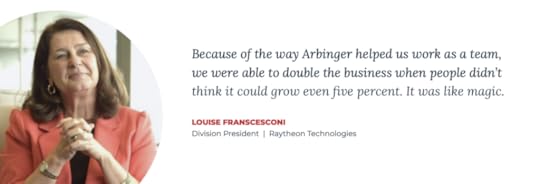 2. Improve team culture with leadership development training
2. Improve team culture with leadership development training Leadership development training can significantly enhance team culture within all types of organizations. By equipping employees with the skills and mindset necessary to foster collaboration, responsiveness, and cross-functional awareness, you can yield remarkable results.
Enhanced communication, empathy, and mutual respect all create an environment that sets you up for success when it comes to collaborating with teammates, achieving organizational objectives, and providing an exceptional experience for customers or clients.
How Regions Hospital transformed culture to improve patient satisfactionTo be a top 10% provider of patient experience, Regions Hospital knew they would need new levels of responsiveness and collaboration across their complex and interconnected ecosystem.
Before partnering with Arbinger to train employees from administration to the front-line, Regions surveyed their staff to see how well they felt management understood and responded helpfully to their needs and concerns. The programs enabled an improvement of 43% in one unit, and 26% in another. Additionally, cross-functional awareness increased by an average of 23%. These metrics indicate a cultural transformation that ultimately facilitated an improved patient experience.
In the nationwide completion to increase the patient satisfaction scores that drive hospital reimbursement, every percentage point increase is hard won. In one wing of the hospital, the number of patients who felt that nurses explained things in an understandable way increased by 8%, exceeding the improvement goal established by hospital management. The same intervention resulted in a 5% improvement in the number of patients who felt that nurses listened to them carefully. In another wing of the hospital, the implementation of Arbinger’s tools resulted in a 5% increase in patients who felt that their preferences were taken into account. These percentage increases reflect hard won progress that translated into increased revenue and market share.
3. Increase profits with leadership development trainingInvesting in a leadership training program isn’t just a strategic decision for improving corporate culture, it can boost profits too. Mindset-focused training enables leaders to shift their mindsets and think outside the box—which is often just what’s needed when it comes to navigating business challenges and coming out on top. As leaders embrace a forward-thinking and inclusive approach, like a ripple effect, they inspire their teams to do the same.
How Tubular steel increased profits in a declining marketTubular Steel faced a dire situation, plagued by internal conflicts, political maneuvering, and internal strife that led to significant inefficiencies. Despite enlisting the services of a highly renowned change management consultant, the company was witnessing a troubling exodus of talent and declining profits, with the looming specter of bankruptcy. Conventional attempts to address these issues had proven ineffective. Therefore, Tubular Steel sought assistance from Arbinger to facilitate a profound transformation at the fundamental level–-a shift in mindset.
Through a comprehensive approach involving group training, hands-on consulting, and executive coaching, the company’s leaders began to recognize their own contributions to the very conflicts they aimed to resolve. The CEO’s executive assistant, who later became the company’s president, devoted full attention to embedding an outward mindset throughout the organization, shedding his other responsibilities. The results achieved were nothing short of remarkable. Tubular Steel saw its revenue soar from $30 million to over $100 million, and its profit more than quadrupled. This impressive return on investment is all the more extraordinary when considering the concurrent drop in market demand for steel products, from 10 million to 6 million tons.
 4. Enable efficiency with leadership development training
4. Enable efficiency with leadership development trainingLeadership training programs enhance efficiency by equipping leaders with the knowledge, skills, and mindset needed to make effective decisions, delegate tasks, and resolve conflicts—which are all crucial for more streamlined and productive operations within an organization. By effectively training leaders on your team, you’ll find that everything from communication to problem solving get smoother.
How the United States Navy enabled unprecedented efficiencyWhen the USS Missouri arrived at Pearl Harbor Naval Shipyard for an extensive maintenance overhaul, Commander George Howell understood that elevating this advanced submarine would demand a significant investment in time, resources, and expertise. However, as Howell observed, it didn’t take long before he noticed “numerous signs of declining crew morale, accountability, and performance.” These challenges among the personnel proved resistant to conventional solutions and hindered the critical mission of ensuring military readiness. To instill a mission-focused mindset and achieve crucial milestones, the leadership of the USS Missouri decided to adopt Arbinger’s outward mindset approach.
They initiated the process with a workshop for the ship’s leaders, followed by training for the entire 140-member crew. The transformations within the crew captured the interest of the shipyard project superintendent, a civilian, who later participated in outward mindset training along with 50 of his own leaders. As the outward mindset gained ground, performance across teams improved, and progress accelerated. Instances of misconduct and “critiqueable events” decreased by an impressive 70%. In the months preceding the implementation of the mindset shift, the overhaul consistently lagged behind schedule by an average of 25 days at each milestone. Nevertheless, the project was ultimately completed five days ahead of schedule and came in an astounding $28.5 million under budget. These remarkable achievements, made possible by the enhanced collaboration and accountability fostered by the outward mindset, were realized even in the midst of uncertainty, restrictions, and the general turbulence of the Covid-19 pandemic.
 Conclusion
ConclusionMore and more, research and practical experience show us the far-reaching benefits of leadership development, especially when you take mindset in account in addition to behaviors and skillsets. Beyond improving team dynamics, it influences virtually every area of your business—from cutting costs to reaching new levels of efficiency.
Ready to take your organization’s leadership to the next level? Download our guide: The Leadership Gold Standard: A Blueprint to Culture Transformation from the Top Down.
The post Building the business case for leadership development training appeared first on Arbinger.
October 19, 2023
Leadership team development: What a best-in-class program should include
These days, making the investment in leadership team development is less about why than how. Businesses everywhere are realizing the far-reaching benefits of team leader development, and with inspiring stories of the power of having a leadership training program in place circulating, it’s difficult to dispute the advantages.
In our own experience with clients alone, we’ve seen results like:
44% increase in trust in leadership333% increase in sales volume20% increase in upward mobility…and that’s just the beginning.
Based on our own research and experience working with thousands of clients globally over the last four decades, we’ve seen what works and what doesn’t. In this blog post, we’re highlighting what a best-in-class leadership development program should include if you’re looking to drive lasting results.
Key components of a best-in-class leadership team development programWhen embarking on a leadership team development journey, it’s most important to begin with a clear vision and objectives for what you want to improve upon and achieve. You’ll likely want to look at this in two ways:
Setting clear leadership development goals: Establishing goals helps determine what areas you need to work on, how to prioritize efforts, and how to define success. It also helps keep you on track, stay accountable, maximize your efficiency, and measure your progress when you know exactly what you’re supposed to be doing. Make sure your goals are clear and defined and well-communicated so that everyone’s on the same page.
Aligning objectives with the organization’s strategic goals: This begins with thinking about what leadership skills and competencies are crucial to achieving our team’s strategic objectives. This ensures that your leadership team development efforts are directly contributing to the long-term success and sustainability of the organization.
When your objectives are in harmony, leadership development becomes a strategic tool for cultivating leaders who can effectively steer the organization toward its desired outcomes. Not to mention, it fosters a shared sense of purpose among leaders by creating a connection between all leaders and the broader mission.
Assessment and skill gap analysisNo organization is perfect, so an important step in leadership team development is identifying what your team is challenged by and where you can improve. Below are some common areas organizations struggle to find alignment.

The good news is, these are all areas that team leader development can improve. (Really—we’ve seen it happen firsthand! We’ve shared some of our favorite success stories in this playbook.)
Thisi is also a good time to gauge relationships between leaders. In our guide, The Leadership Gold Standard: A Blueprint to Culture Transformation from the Top Down, we dive deep into how relationships impact leadership and trickle down throughout organizational culture. While skillsets are important, having a team that recognizes and respects the humanity in their peers is how winning teams are born. A true high-performing team puts a premium on authenticity and interpersonal relationships, knowing that building strong connections with others is the key to achieving goals together.
A focus on mindsetA leader’s mindset drives what they do, why they do it, and the impact they have on the people they work with. When leadership training programs don’t start with a leader’s mindset, it doesn’t address how leaders interpret problems and tackle opportunities within an organization.
Leaders don’t just set the tone for an organization; they make the strategic decisions that are instrumental to organizational success or failure. Leaders with the mindset to see endless possibilities in their employees and partners are more likely to foster a culture of innovation and success.
You can watch this short video to learn more about how mindset impacts organizational results:
Customized curriculumIt’s true that there’s no one-size-fits-all approach to leadership development. And that’s exactly why it’s important to start out with a clear idea of what objectives you want out of your leadership development investment. This, coupled with analyzing your organization’s challenges and goals, will help reveal where you need to place the most focus.
That being said, we believe there are seven core areas that make up a leadership development program. They are:

Develop accountable people: Research suggests that when we feel a sense of ownership over our work, it not only influences our feelings toward our organization; it actually makes us more helpful and generous toward others as well.
Foster a culture of helpfulness: As a leader, it’s your job to foster a culture of helpfulness by encouraging employees to create more meaningful connections with those around them, and empowering them to work together in more productive and creative ways.
Nurture employee engagement: Statistically, disengaged employees have an 18% lower productivity rate, and on average cost a company $3,400 for every $10,000 the employee makes. So naturally, every leader wants to strive for an engaged workforce.
Transform conflict: Conflict at work can have far-reaching implications, affecting not only individual well- being but also team dynamics and overall productivity.
Build relationships: A true high-performing team puts a premium on authenticity and interpersonal relationships, knowing that building strong connections with others is the key to achieving goals together.
Recruit and retain top talent: Having the right people in your corner is crucial to achieving the results you desire—but attaining and retaining them is something that’s easier said than done.
Take corrective action: Corrections aren’t a punishment, they demonstrate your organization’s commitment to upholding a standard, which in turn influences employee behavior and attitudes.
While moving through these steps, it’s important to cater to the different learning styles on your leadership team.
We’ve found it most effective include a combination of the following learning techniques:
Facilitator-led programmingBreakouts and discussion groupsVideo examples and case studiesTools and worksheetsOngoing coaching sessionsHaving multiple formats also helps keep your team engaged and really gives them an opportunity to reflect upon how the training and examples can be applied to their daily work and relationships.
Tools and takeawaysAs we mentioned in the previous section, having a set of tools available—both during training and to take away afterwards—are critical for getting leaders to think about daily application to their work life.
Effective leadership team development should inspire a shift in mindset, which also means a different way of doing things. This leadership toolkit, for example, features some of the tools offered through Arbinger’s Outward Leadership program. They’re designed to operationalize common workplace scenarios so that leaders can approach difficult conversations, meetings, or situations in a more outward and empathetic way.
 Measuring the ROI of leadership team development
Measuring the ROI of leadership team development As you invest in leadership development, it is important to build a success plan to connect training to strategic goals. Success metrics vary by industry, but here are some general guidelines for measuring both organizational health metrics and the KPIs (key performance indicators) that track the success of your efforts:
Organizational health metricsThe four key areas you should be measuring to gauge the success of your leadership team development are:
TrustCollaborationAlignment CommunicationsThese metrics are typically obtained through periodic surveys and individual or group interviews. We recommend getting a pulse check before, during, and after implementing the steps in this guide for a true indicator of change.
 Key performance indicators
Key performance indicatorsKey performance indicators (KPIs) are quantifiable measures used to evaluate the success of an organization, employee, or team in meeting objectives for performance. While some KPIs like job satisfaction or psychological safety apply to all roles and industries, many will be unique to your organization.
Some areas you may want to consider including in your success plan are:
Revenue growthOperational efficiencyBudget reductionJob satisfactionTurnover and talent retentionEmployee engagement and satisfaction scoreConclusionWhile there’s not a singular “right way” to structure team leader development, one thing is certain: in order to inspire real and lasting change, you have to go beyond simply telling your leaders what you want them to do. Instead, focus on challenging your leaders’ existing way of thinking, which in turn will change how they see themselves and those around them. This shift in mindset is the root of real change—and where you’re going to see long-term results.
To learn more about transforming culture from the top down, check out our guide: The Leadership Gold Standard: A Blueprint to Culture Transformation from the Top Down.
The post Leadership team development: What a best-in-class program should include appeared first on Arbinger.
October 16, 2023
Leadership effectiveness: How to set leadership development goals
In today’s world of work, most teams understand the importance of leadership development. It has a measurable impact on team performance, culture, and ultimately revenue. In fact, for every year a company delays leadership development, it costs 7% of their total annual sales. But where many businesses struggle is tracking the effectiveness of their programs and setting leadership development goals.
In this blog, we’ll look at why it’s important to set leadership development goals in order to determine if your leadership development program is hitting the mark.
Understanding the importance of leadership development goalsBefore we explore how to set leadership goals, let’s talk about why they’re important. Establishing leadership development goals is like creating a plan to ensure your organization has the strongest and most equipped leaders who can lead your team in the right direction. Goals help us figure out what areas we need to work on, how to prioritize our efforts, and how to define success.
Why set leadership development goals?Accountability: Tracking and measuring goals holds leaders accountable for their progress. Knowing efforts are being measured makes leaders more likely to prioritize leadership development initiatives, tools, and practices, rather than letting them fall through the cracks and maintaining the status quo. Staying on track: Having a clearly defined set of goals reminds leaders (and everyone else in the organization) what they’re striving to achieve. Plus, having these goals available for all employees to access boosts transparency, making everyone feel like they’re aware and involved. Maximize efficiency: Failing to measure progress can result in inefficient resource allocation. With a clearly defined set of goals, organizations will have something to track against. This data can help in refining the program to ensure it aligns with the organization’s evolving needs and objectives.Measure return on investment (ROI): Leadership development programs typically require substantial investments of time and resources. Measuring the impact of these programs helps organizations assess the return on their investment. Strategies for leadership goal-settingSetting effective goals for a leadership development program in an organization involves a systematic approach. Here are 15 ways to strategically set leadership development goals to ensure you’re both maximizing your investment in leadership development while also staying on track of your goals.
1. Identify organizational needs: Start by understanding the current and future needs of your organization. What leadership skills and competencies are crucial to achieving strategic objectives?
2. Engage stakeholders: Involve key stakeholders such as executives, HR, learning and development, and team leaders in the goal-setting process. Their input can provide valuable insights and ensure alignment with the organization’s vision.
Tip: Kick off your leadership development work with Arbinger’s Start in the Right Way tool. It’s a great exercise to ensure that everyone who is involved is aligned!

3. Define specific objectives: Make your leadership development goals specific and measurable. Avoid vague statements and set clear, quantifiable objectives that can be tracked and evaluated. It can be a good idea to create a success plan that connects your leadership training to your organization’s strategic goals. At Arbinger, we partner with our clients to do this to ensure we start off every engagement in the right way.
4. Use SMART Criteria: Using SMART criteria provides a structured and effective framework for creating goals that are clear, achievable, and focused.
Specific: Clearly state what you want to achieve.Measurable: Define how you will measure success.Achievable: Ensure that the goals are realistic and attainable.Relevant: Make sure the goals are aligned with organizational needs.Time-bound: Set a deadline for achieving each goal.Tip: An example of a SMART goal when it comes to leadership development could be something like:
“By November 15, ensure that all members of the executive team have completed the first module of the DEI training program, which covers foundational concepts and principles of diversity, equity, and inclusion, with 100% completion expected within two weeks.”
5. Prioritize goals: Not all goals will have equal importance. Prioritize them based on their impact on the organization’s success and the development needs of individual leaders.
6. Break goals into milestones: Divide goals into smaller, manageable milestones. This makes it easier to track progress and provides a sense of achievement along the way.
Tip: Find a way to document these milestones in a place where At Arbinger, we use Asana, a project management tool, to break larger goals into smaller, more actionable projects.
7. Allocate resources: Determine the resources required to achieve each goal, including budget, time, and personnel. Ensure that resources are allocated appropriately.
8. Develop action plans: Create detailed action plans for each goal, outlining the specific steps, responsibilities, and timelines required to achieve them.
9. Monitor and evaluate progress: Continuously track progress toward your leadership development goals. Regularly review and adjust your action plans as needed to stay on course.
10. Collect feedback: Gather feedback from program participants and stakeholders to assess the effectiveness of the leadership development program. Use this input to refine goals and strategies.
11. Celebrate achievements: Acknowledge and celebrate when goals are achieved. This helps maintain motivation and enthusiasm among participants.
Tip: Create a group chat with everyone involved and use it to stay accountable, ask questions, and motivate each other. Words of encouragement go a long way!

12. Adapt to changing needs: Recognize that organizational needs and priorities may evolve over time. Be flexible and willing to adjust goals and the program accordingly.
13. Communicate and align: Ensure that all relevant parties are aware of the goals and objectives of the leadership development program. Alignment and buy-in from leaders and participants are critical for success.
14. Evaluate impact: After goals are achieved, evaluate their impact on leadership effectiveness and overall organizational performance. This assessment helps demonstrate the value of the program.
15. Iterate and improve: Use the insights gained from evaluations to iterate and improve the leadership development program and its goals continually.
Tip: Set up a regular meeting to check in on progress, share successes and challenges, and re-evaluate goals based on your experiences.

Save this checklist as you look to set leadership development goals to ensure your training stays aligned to strategic objectives:
 Truly effective leadership development is an ongoing process
Truly effective leadership development is an ongoing processAs you work through your leadership development goals, it’s important to remember that effective leadership development is an ongoing process. By following these steps, you can create a structured and purposeful framework for your organization’s leadership development program, ultimately contributing to the growth and success of both individual leaders and the organization as a whole.
For more on how to become an effective leader, download our guide, The Leadership Gold Standard: A Blueprint to Culture Transformation from the Top Down.
The post Leadership effectiveness: How to set leadership development goals appeared first on Arbinger.
October 13, 2023
Organizational culture assessment: What is my impact on culture as a leader? [Quiz]
Organizational culture is the invisible force that touches every facet of an organization, shaping everything from team performance to employee morale. It’s the collective personality of a company, the unwritten rules that guide interactions, and the shared beliefs that influence decision-making. In essence, it’s the heartbeat of an organization, driving its success or failure. Understanding and actively cultivating this culture is crucial for organizations striving to thrive in today’s world of work.
A strong organizational culture acts as a compass, providing a sense of direction and purpose to employees. It defines what’s acceptable, what isn’t, and sets the tone for how individuals should collaborate, communicate, and innovate. It transcends policies and procedures, making it the backbone of an organization’s identity.
However, to harness the power of organizational culture, organizations must first understand where they stand on their cultural journey. This not only aligns leadership development and other efforts with overarching organizational goals, but helps leadership identify areas of improvement when it comes to organizational culture.
We created this organizational culture assessment to help leaders gauge where their organizational cultures are missing the mark. Consider it a pulse check for assessing your impact, as a leader, on organizational culture change.
Ready to get started? Take the short assessment below.
Before we get started, what’s your first name?OK #outlook a{padding:0}body{margin:0;padding:0;-webkit-text-size-adjust:100%;-ms-text-size-adjust:100%}table,td{border-collapse:collapse;mso-table-lspace:0pt;mso-table-rspace:0pt}img{border:0;height:auto;line-height:100%;outline:none;text-decoration:none;-ms-interpolation-mode:bicubic}p{display:block;margin:13px 0}@media only screen and (min-width:480px){.mj-column-px-640{width:640px !important;max-width:640px}}.mj-column-px-640{width:100% !important;max-width:640px}/*!sc*/data-styled.g1[id="sc-global-juhJZJ1"]{content:"sc-global-juhJZJ1,"}/*!sc*/.gkGyle{position:relative;display:inline-block;width:16px;height:13px;-webkit-transform:translate(-4px,-2px);-ms-transform:translate(-4px,-2px);transform:translate(-4px,-2px)}/*!sc*/.gkGyle::before{content:'';position:absolute;width:2px;height:15px;background-color:#FFFFFF;left:14px;top:0px;-webkit-transform:rotate(45deg);-ms-transform:rotate(45deg);transform:rotate(45deg)}/*!sc*/.gkGyle::after{content:'';position:absolute;width:7px;height:2px;background-color:#FFFFFF;left:5px;top:9px;-webkit-transform:rotate(45deg);-ms-transform:rotate(45deg);transform:rotate(45deg)}/*!sc*/data-styled.g5[id="sc-gsTCUz"]{content:"gkGyle,"}/*!sc*/
The post Organizational culture assessment: What is my impact on culture as a leader? [Quiz] appeared first on Arbinger.
October 11, 2023
The Leadership Gold Standard: Introducing your blueprint to culture transformation
No matter how much has changed in the working world over the last few years, one thing remains constant: the pivotal role of leadership in shaping organizational culture. At Arbinger, we’ve seen firsthand that when an organization invests in their leadership team, the positive outcomes trickle all the way down throughout the organization.
In fact, our recent research report revealed that 52% of those surveyed believe that leadership development has the greatest impact on improving an organization’s culture. Successful leadership development initiatives are also associated with a more positive outlook on business success, increases in revenue, and feelings of contributing meaningful work that makes an impact.
For that reason, we wanted to dig in deeper and explore the profound impact leadership development has on an organization’s success—and what leadership teams can do to propel culture transformation.
Exploring the value of leadership development and culture transformation at organizationsLeadership is not just a position—it’s a catalyst for change. A positive company culture starts from the top down, making leaders the key to unlocking its benefits. So when it comes to questioning why to invest in leadership development, the answer is clear: it’s crucial for yielding far-reaching benefits.
We know that leadership development has the most significant impact on improving an organization’s culture, but on top of that:
80% of executives prioritize strengthening organizational leadershipEmployees who undergo leadership training exhibit a remarkable 20% increase in performance
These reasons alone should be enough to want to double down on your leadership development efforts, but it doesn’t stop there.
The relationship between leadership and cultureQuality leadership isn’t just a nice-to-have, it’s essential for retaining your top talent. Without effective leadership, employees become disengaged, resulting in significant performance and retention issues. And the cost of replacing an employee can range from an additional 90% to 200% of their annual salary.
In addition, there’s matters of accountability, helpfulness, conflict resolution, relationship-building, and even corrective action–-all of which are a lot easier to make happen on the foundation of a strong culture.
With all this in mind, investing in leadership development becomes an obvious choice. But then, the question becomes less about why than how.
Leadership development in today’s world of workThe workplace has undergone unprecedented changes in recent years. In challenging times, the need for strong leadership to steer the ship is paramount.
But if all this has you wondering, “Where do I start?”—we’ve got you covered.
To answer all these questions and more, we published The Leadership Gold Standard: A Blueprint to Culture Transformation from the Top Down. In it, we provide a blueprint for culture transformation, beginning with leadership.
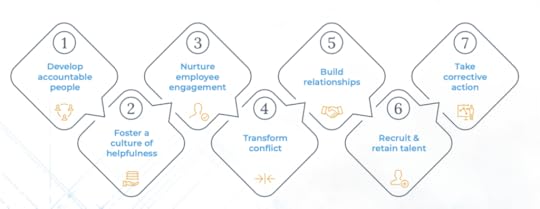
The guide outlines seven core areas of leadership development:
Develop accountable people: Research suggests that when we feel a sense of ownership over our work, it not only influences our feelings toward our organization; it actually makes us more helpful and generous toward others as well.Foster a culture of helpfulness: As a leader, it’s your job to foster a culture of helpfulness by encouraging employees to create more meaningful connections with those around them, and empowering them to work together in more productive and creative ways.Nurture employee engagement: Statistically, disengaged employees have an 18% lower productivity rate, and on average cost a company $3,400 for every $10,000 the employee makes. So naturally, every leader wants to strive for an engaged workforce.Transform conflict: Conflict at work can have far-reaching implications, affecting not only individual well- being but also team dynamics and overall productivity.Build relationships: A true high-performing team puts a premium on authenticity and interpersonal relationships, knowing that building strong connections with others is the key to achieving goals together.Recruit and retain top talent: Having the right people in your corner is crucial to achieving the results you desire—but attaining and retaining them is something that’s easier said than done.Take corrective action: Corrections aren’t a punishment, they demonstrate your organization’s commitment to upholding a standard, which in turn influences employee behavior and attitudes.Transformation starts hereLeadership development is a necessity for organizations who are looking to transform any element of their organization’s culture. After all, leadership sets the tone for everything going on at your organization—from the smallest interactions to major strategic plans.
Ready to take the first step? Get your free copy of The Leadership Gold Standard: A Blueprint to Culture Transformation from the Top Down.

The post The Leadership Gold Standard: Introducing your blueprint to culture transformation appeared first on Arbinger.
October 2, 2023
Is bringing humanity to the workplace the key to building stronger teams?
If you’re in the market for any sort of team development solution, you’ve likely already found that there are countless articles, books, and how-to videos about boosting team performance, streamlining operations, and maximizing efficiency. They’ll typically run through a list of tips or suggestions which—while they mean well—might not work for your team. (At least long-term, anyway.)
There’s a reason for that. Just as each team possesses its own distinct characteristics, challenges, and objectives, the same holds true for every team member. It’s crucial to recognize that, before anything else, the individuals that make up your team are people.
This might seem like a simple concept, but it’s one that we forget so easily—especially in the face of deadlines and quotas. So before implementing a new procedure at work and then wondering why the new processes aren’t sticking, take a step back and remember that your teammates are people.
Let’s talk about how and why bringing humanity to the workplace helps you build stronger teams.
Seeing people as people“Seeing people as people,” means recognizing that each person we interact with has their own aspirations, challenges, emotions, and experiences that shape their perspective and actions. By embracing this mindset, we shift away from a self-centered approach, and become more attuned to the needs, desires, and feelings of others. Ultimately, it underscores the importance of acknowledging the humanity in everyone we encounter.
When we choose to see people as people, it encourages us to cultivate empathy and genuine understanding in our interactions. Instead of merely pushing our own agendas, we take the time to listen and connect with the people around us. This perspective fosters:
More meaningful relationshipsEffective communicationA greater capacity for collaboration and cooperationOn top of that, it serves as a reminder that by acknowledging the humanity in others, we not only deepen our connections, but also contribute to a more compassionate world.
Bringing humanity to work helps us build stronger teamsRecognizing the humanity in others and adopting the mindset of seeing people as people can significantly enhance team dynamics at work. Why? Because when colleagues and leaders acknowledge that their coworkers have their own goals, challenges, and feelings, it becomes easier to relate to one another on a human level.
This empathy leads to better workplace relationships, reduced conflicts, and a more supportive atmosphere where individuals genuinely care about each other’s well-being.
Some ways bringing humanity to the workplace helps build stronger teams include:
Improved team synergyAn EY study revealed that when there’s mutual empathy between company leaders and teammates, it leads to increased efficiency (88%), creativity (87%), job satisfaction (87%), idea sharing (86%), innovation (85%) and even company revenue (83%).
All of these factors not only lead to better team synergy, but also better business success. Colleagues who perceive each other as individuals with unique emotions and needs are much more likely to form genuine connections and bonds of trust. By acknowledging the humanity in others, workplaces can foster an environment where employees genuinely care about each other’s well-being, ultimately leading to stronger, more supportive, and more meaningful professional relationships.
Arbinger’s Meet to Give tool is a great way to get team members thinking about their impact on others. Rather than entering a meeting with a list of requests, it flips the script and empowers employees to see what they can do for their colleagues to be more helpful.
 Boost employee engagement
Boost employee engagementEmployee engagement is a critical aspect of a thriving workplace, and recognizing the humanity in colleagues plays a pivotal role in enhancing it. According to Gallup’s State of the Global Workplace report, only 15% of employees worldwide are engaged in their jobs, leading to decreased productivity and increased turnover.
When individuals feel seen and valued as unique human beings in the workplace, their engagement levels rise significantly. Employees with highly empathic senior leaders report 76% higher levels of engagement at work. This heightened engagement stems from a sense of belonging, as employees are more likely to be invested in their work when they feel that their contributions are acknowledged and their well-being is genuinely cared about.
When feel valued and have a strong understanding of how they fit within the organization, they’re much more likely to be engaged. Arbinger’s Job Map tool helps with this.
 Improve communication
Improve communicationBusinesses with effective internal communication processes are found to be 50% more likely to have lower employee turnover. That said, psychological safety plays a huge role in how willing employees are to share their thoughts and ideas with one another. One of the keys to creating an inclusive environment where employees feel safe to be themselves is by bringing your own humanity to work. In a leadership role especially, make time and space to share about yourself—and make sure to ask your teammates about themselves too. It’ll be a lot easier for employees to bring up contentious issues or challenges when they remember that you’re only human, just like them.
Arbinger’s Meet to Learn tool is designed to break down barriers between teammates and shed light on who they are, at work and outside of it. These conversations can be tricky to facilitate if you’re not used to them, so this tool provides a framework to make them happen smoothly.
 Better collaboration
Better collaborationBringing humanity to work can have a massive positive impact on collaboration. When individuals genuinely care about the well-being of their coworkers, they are more likely to offer assistance, support, and cooperation when needed. This is especially true when kicking off a new initiative or project. A new way of doing things can oftentimes feel stressful, daunting, or even unnecessary if you don’t understand the motives behind the change. But by recognizing your teammates have goals and objectives to achieve (just as you do), it makes it easier to step back and see the full picture.
Using something like Arbinger’s Start in the Right Way tool helps you begin on the right foot. It’s a lot easier to point out how difficult something will be, rather than learning about how it can be beneficial. This tool operationalizes that process.

By recognizing each other’s humanity, team members are more likely to respect diversity in their teammates, and leverage the unique skills and experiences that each person brings to the table.
Humanity at work in actionThe following story from Outfit7 is a great example of the transformative power of embracing humanity in the workplace.
As Outfit7 expanded rapidly, founders Samo and Iza were concerned about maintaining their unique company culture. In an attempt to hold onto their unique culture amidst so much change, they initiated a transformative journey with Arbinger.
Through Arbinger-facilitated training, the leadership team recognized the importance of shifting to an outward mindset focused on others, rather than just themselves. This immediately prompted shifts in the ways employees communicated with one another, resolved disagreements, and laid the foundation for collaboration.
Arbinger’s ongoing training—and the development of internal facilitators—continued to spread this positive ripple effect throughout the company. The results were remarkable: leaders reported an increased capacity to listen to one another more objectively, allowing them to reevaluate their perceptions, see issues differently, overcome their differences, and focus on results. Employees became more attentive to helping colleagues, and the culture shifted towards heightened collaboration and accountability.
This cultural transformation translated into exceptional business outcomes, including billions of app downloads, millions of active users, and billions of YouTube views.
Recognizing the humanity in coworkers can lead to lasting positive change and remarkable success. Watch Outfit7’s story here:
How Arbinger brings humanity to the workplaceInfusing humanity into your workplace yields impressive outcomes. When our clients embrace the transformation of mindset—and thinking of others rather than just their own goals, they experience a profound shift in their workplace culture, resulting in heightened collaboration, innovation, and productivity.
We’ve seen results like…
A 400% increase in sales performance at a multinational retailer65% more products shipped by a large medical supplier during 6 months after implementing Arbinger’s solutions (with no increase in staffing)A 92% decrease of misconduct-related incidents during 16 months post-Arbinger implementation in a 6000+ employee organizationThrough the application of proven training and coaching methodologies to shape this shift in mindset, our clients have witnessed remarkable improvements.
Watch this video to learn about the remarkable ripple effect humanity in the workplace has.
The post Is bringing humanity to the workplace the key to building stronger teams? appeared first on Arbinger.
September 19, 2023
Why work with a leadership development company
Most organizations recognize the importance of leadership development. There’s a direct connection between leadership effectiveness, employee engagement and productivity, and employee retention. On average, replacing an existing employee can cost up to 200% of the original employee’s salary, and that’s not including the opportunity cost of the vacant position.
That’s why organizations spend copious amounts of money in the category. However, research from Harvard Business Review shows that while organizations spend over $60 billion on leadership development training, just 10% of these efforts deliver measurable results. Clearly, it’s not just that you spend the money to improve your leadership development process; it’s how you spend it that counts.
When it comes to leadership development training, you have several options. In this post, we’ll go through some of the options you have at your disposal to develop effective leaders, and how a leadership development company compares with each of them.
 Leadership development self-study
Leadership development self-studyThere is no shortage of books for (and by) leaders or curated videos by motivational speakers. These are a great starting point for interested executives or those aspiring to a leadership role and may enable them to identify transformation opportunities by finding out about the experiences of other leaders—and the philosophies, methodologies, and processes that worked for them.
However, business transformation rarely jumps directly from a book or video, and it’s difficult to achieve the kind of mindset change needed to transform an organization from these sources alone. Even if all your leaders consume the same material, they are not likely to interpret the information in the same way, and even less likely to know how to incorporate what they’ve learned into an organizational leadership development plan that reimagines key processes and relationships. This is not to say that a leadership book isn’t a great start; the genesis of Arbinger’s business was a book about the relationship between mindset and organizational challenges that resonated so strongly with our customers that they wanted more!
And that’s the point: Partnering with a company that can transform a great idea into comprehensive leadership development strategy can apply the same concepts you loved reading about in a way that is both customized to your organization’s needs and implemented in a cohesive way so that all of leadership is on-board and unified.
An experienced leadership development company will work with you to assess your most pressing issues, understand their impact on results, and then develop and implement a plan that provides lasting change through a shift in mindset brought about by training, strategy sessions, individual coaching, and tools to help in the everyday application of new approaches. This will provide significantly more long-term benefits and is much more likely to drive the kinds of results you’re looking to achieve.
In-house leadership developmentOrganizations often look for in-house options to provide leadership training for managers and senior executives. This can take many forms:
Workshops delivered by internal experts Mentorship programs Job rotations and cross-functional projects Feedback from internal surveys and assessments Role-plays and other tactical toolsThese types of programs all seek to capitalize on internal knowledge to spread best practices across the organization, and they offer a lot of benefits within organizations that have successfully identified both their biggest challenges and the best way to overcome them.
However, many organizations either assume some of the most acute leadership challenges are not really a problem and just the cost of doing business: that is, they assume that some challenges are impossible to overcome and just not worth trying to solve. For example, interdependent departments may have longstanding conflicts or tensions that can cripple innovation, collaboration, and productivity, but just chalk it up to natural tension.
In cases like this, organizations need a disinterested third party that can take an objective view and provide meaningful solutions that focus on addressing the mindset that causes these challenges to begin with. This need is exacerbated by the constant tug on resources that makes it difficult for internal resources to focus on a strategic goal like leadership development when acute challenges require immediate attention. This is one of the key benefits of a third-party leadership development strategy: Looking at these challenges with fresh eyes, understanding the mindset that causes them to begin with, and then having the resources, expertise, and tools to do the work necessary to break down longstanding walls.
Software solutions and online training for leadership developmentLearning management systems (LMSs) are ubiquitous and typically offer lots of curated leadership development training content for leaders. These can incorporate extensive curriculums using curated content from third-party vendors and complex simulations that attempt to replicate real-world leadership challenges in an online platform. Other companies offer online coaching that pairs leaders with either internal mentors or third-party experts to help them overcome specific challenges. These can be enticing options for a few reasons:
Most organizations already have an LMS and incorporating leadership training—particularly from a third party—is easy to do. A leadership development plan can be incorporated into the succession planning capabilities of some LMSs, once again providing a one-stop shop for leaders and others to get their training. This training is often curated by well-respected industry luminaries who bring both experience and gravitas to the process. It can be more cost effective than contracting with a leadership development company.For many organizations, LMS-based management leadership training is the most expedient option because it can capitalize on existing resources. However, this training can rarely be personalized to the unique needs of every organization, and more importantly, leadership development is an ongoing process that can’t be implemented simply by viewing content or interacting with software simulations.
In contrast, developing and implementing a leadership development plan in partnership with an experienced third-party organization enables you to marry the concepts you might learn about in curated videos with the real-life challenges your organization faces every day. The benefits of leadership development are only delivered if important concepts are synthesized into actionable steps that address the issues that hold you back. And this can only be accomplished if training is focused on your organization’s unique challenges, then followed up with individual and group sessions that home in on the issues that inhibit the collaboration, innovation, and productivity that drives success in your organization.
Working with a leadership development companyAs you’ve probably figured out by now, no two organizations have the same challenges, so going with an option that isn’t customized to their needs is unlikely to miraculously solve them. Further, leadership development is not a one-step process, and the only way to achieve the kind of organizational transformation you’re looking for is by partnering with an expert over the long haul, using multiple modalities to train and reinforce key leadership concepts. Transformation doesn’t happen in days, and so you shouldn’t expect your leadership development program to fix your problem in a few days either. The process should look something like this:

With decades of research and thousands of clients, The Arbinger Institute uses our vast experience to help leaders transform their cultures by enabling the shift in mindset that leads to exceptional results. We help leaders develop a people-centric approach to build engaged and productive teams, inspire genuine inclusivity, and drive growth in any organization. Through an ongoing partnership that includes immersive training, one-on-one sessions, group workshops, and a suite of practical tools centered around a shift in mindset, we show how executive-level challenges can be overcome with outward leadership approaches. We help leaders shift from holding people accountable to developing accountable people, and foster human connection between those they work with and those they lead to create sustainable change.
Interested in working with a leadership development company? Learn about Arbinger’s leadership development program here.
The post Why work with a leadership development company appeared first on Arbinger.
September 11, 2023
Why culture eats strategy for breakfast: A wake-up call for C-suite and VPs
When driving towards your goals and objectives, it’s easy to get caught up in the day-to-day grind of execution. Laying out a strategy and planning undoubtedly plays a pivotal role in the success of any organization. However, the efficacy of a business strategy will be greatly diminished without a complementary and reinforcing corporate culture. Don’t get me wrong. Strategy is vital. Without it, we’re navigating in the dark. But culture is essential to make it work, it can either fuel your strategy or douce it like torrential rain on a beach day.
Research and practical experience increasingly point toward culture as an often-overlooked factor that can either propel or impede strategic objectives. As Peter Druker famously put it: “Culture eats strategy for breakfast.”
Here are some thoughts on the importance of culture and actionable insights for leaders.
While often categorized as a ‘soft’ element of business, culture is the foundational layer upon which all organizational activities rest. Think of your corporate strategy as a seed—no matter how much sun or water it gets, its success ultimately depends on the soil conditions, i.e., the organizational culture, in which it is planted.
Skepticism around the influence of culture is often rooted in its intangible nature. There is quantitative evidence for culture’s impact. For example, a Harvard Business Review analysis demonstrated that companies with strong cultures experienced up to a 4X increase in revenue growth. Clearly, culture is not just a morale booster but a significant business driver.
The disconnect between culture and strategyStrategies often fall short when the workforce does not understand the purpose behind them, leading to poor execution. In such instances, the gap between strategic vision and operational reality can often be attributed to a cultural misalignment.
Here’s a hypothetical scenario near and dear to my heart that I’ve encountered at many B2B companies. Imagine an intricately crafted account-based experience (ABX) strategy, backed by high-quality software, detailed planning, a savvy marketing team, and even the support of the executive team—well planned out and ready to blast off. But it doesn’t even reach orbit on the first attempt to launch. Why? Lack of interdepartmental collaboration led to implementation failures and a blame game. Sales folks trying to close late-stage pipeline are perplexed and insulted as to why top of funnel activity training is being asked of them in the midst of fiscal period deadlines. Marketing, who sees the sales team’s lack of pipeline coverage, feels dejected because sales doesn’t seem to appreciate the marketing team’s efforts to support sales achieving their own goals. Sound familiar? Even a well-formulated strategy can falter if the organizational culture isn’t aligned. In this case, the culture at the B2B enterprise effectively “ate” its ABX strategy for breakfast.

Imagine the same scenario in a collaborative culture, the same ABX strategy not only succeeds—but excels. The difference is the mindset of the team and the culture that stems from that mindset. The ripple effect of culture has a bigger impact on success than the soundness of the strategy.
Focusing on culture doesn’t mean taking your eyes off strategy or results. Rather, it’s about creating an environment where strategies are more effectively implemented and where both employees and the organization can thrive. It’s the backdrop that allows for enhanced performance, making the company not just a great place to work, but a place that works great.
This research report shares that 47% of organizations that have very successful company cultures saw significant revenue increases in the past year compared to just 9% of those with less successful or unsuccessful company cultures. On top of that, 75% of those with very successful company cultures have extremely positive outlooks on business success compared to just 21% of those without very successful company cultures.
Three principles for aligning culture and strategy1. Strategic alignment through shared vision
A company’s vision serves as its North Star, guiding both strategy and culture. Ensure that employees at all levels understand the larger purpose of the organization. This can be achieved through regular communication, town halls, and workshops. When strategy and culture are aligned under the umbrella of a shared vision, the whole organization moves in a synchronized manner.

Arbinger’s 3A+ Development Framework opens up the lines of communication between leaders and employees by providing a framework for regular effort and impact check-ins.
2. Employee empowerment
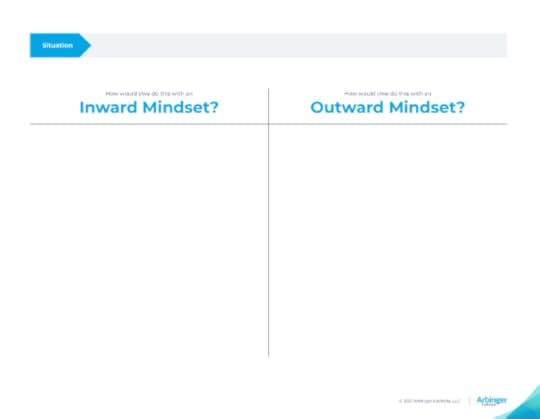
Empower your team members to take ownership of their projects. When employees feel a sense of autonomy and are provided the resources and guidance to execute, they are more likely to engage deeply with both the strategy and the culture of the organization. Empowerment acts as the grease in a well-oiled machine, helping to smoothly implement strategic plans.
Try Arbinger’s Start in the Right Way tool to give employees a leg up when kicking off a new project or initiative.
3. Open feedback channels
An organization should have open and transparent channels for feedback, where employees can voice their concerns, suggestions, or even disagreements with the strategy or elements of the culture. This not only fosters a culture of openness but also enables real-time adjustments to strategies that may not be working as intended.

Arbinger’s Apply S.A.M. tool empowers employees to see others, adjust their efforts, and measure impact. It helps reframe challenges by focusing on others, rather than just ourselves.
ConclusionFocusing on organizational culture leads to multiple business benefits that improve results. These include higher employee engagement and productivity, lower staff turnover, easier talent attraction, and better collaboration and innovation. A strong culture also enhances customer satisfaction, streamlines decision-making, and makes the company more adaptable to market changes.
 Source: Arbinger
Source: ArbingerUltimately, a culture-centric approach not only complements strategic objectives but also ensures long-term sustainability and profitability. It’s not an either-or situation; a strong culture can actually amplify the effectiveness of your business strategies.
Leaders play a critical role. Good (or bad) leadership sets the tone for everyone and everything within a company, and we can consider culture to be a ripple effect of that.
As you assess and refine your strategic plans, consider the cultural aspects that underpin successful strategy execution. Ignoring culture can lead to discord that can significantly undermine even the most well-thought-out strategic plan.
Leadership is not merely about crafting intelligent strategies but also about creating an environment where those strategies can be effectively implemented. Thus, it becomes imperative for C-Suite executives and VPs to prioritize culture alongside strategic planning
To learn more about the top qualities of a good company culture, read this blog.
The post Why culture eats strategy for breakfast: A wake-up call for C-suite and VPs appeared first on Arbinger.
Arbinger Institute's Blog
- Arbinger Institute's profile
- 375 followers



